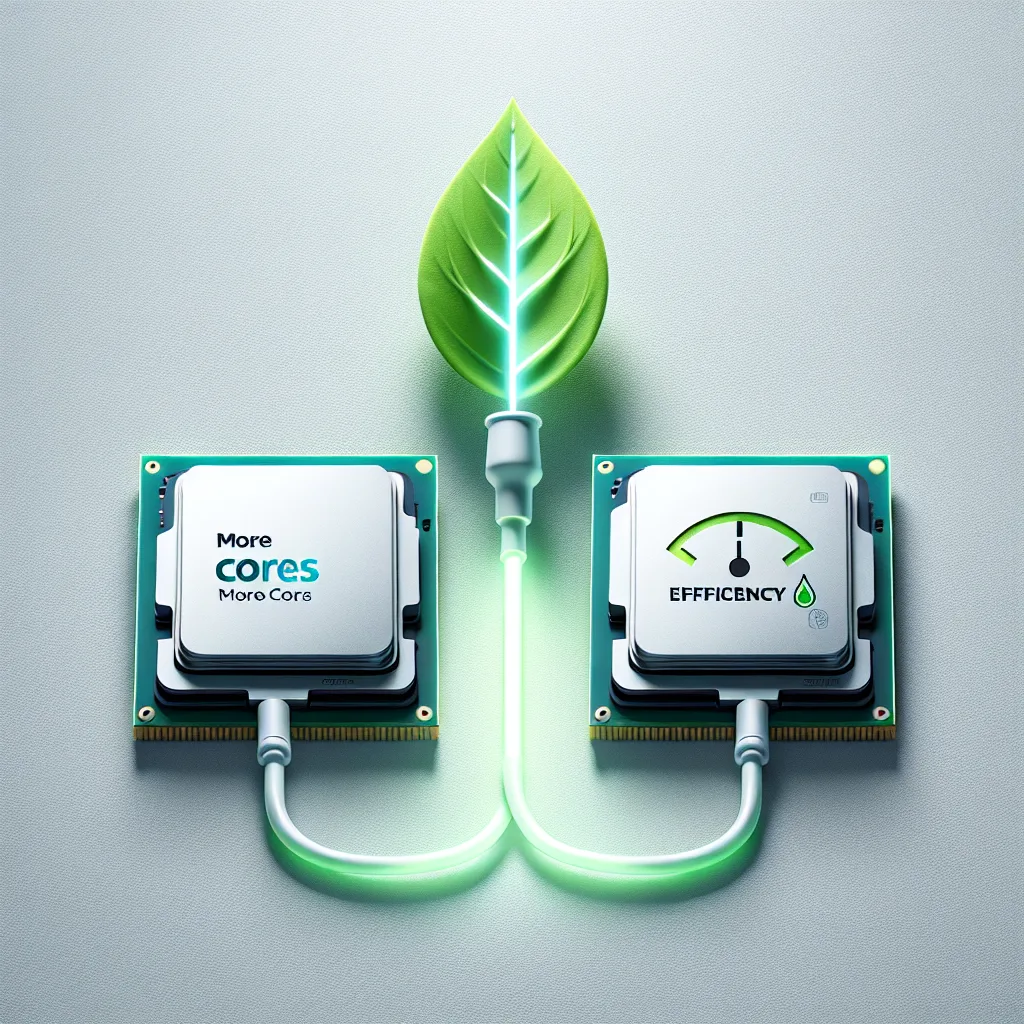Thinking of using an older Xeon CPU for your home server? We compare a Broadwell Xeon vs. a modern Coffee Lake chip to see which is more power-efficient at idle.
I spend a lot of time thinking about my home server. Maybe too much time. It’s a fun hobby, and like any good hobby, it sends you down some interesting rabbit holes. Recently, I got stuck on a question about power consumption.
I have a pretty decent little server box running right now. It’s built around a 9th-gen Intel chip—a Coffee Lake processor with a good balance of cores and speed. It handles my TrueNAS setup and a couple of virtual machines without breaking a sweat.
But I’m a tinkerer. And I have a spare motherboard for older, high-end server hardware sitting on a shelf. It’s an X99 board, which uses the LGA-2011-3 socket. This got me thinking. Could I swap my modern setup for an older, beefier server CPU? I was looking at Xeon processors from the “Broadwell” era, some with a massive 18 cores.
The trade-off seemed simple enough: I’d lose some single-core speed, but I’d gain a ton of cores. For a server running multiple VMs, that sounds great, right?
But then I hit the real question: what about power draw when the server is just… sitting there?
The Big Deal About Idle Power
For a machine that’s on 24/7, the power it uses while doing nothing is actually a huge deal. Most of the time, my server isn’t transcoding video or running complex calculations. It’s idling, waiting for a request.
My goal was to keep the whole system humming along at under 50 watts, and ideally, under 40 watts at idle. This is where the comparison between a modern consumer chip (Coffee Lake) and an older server chip (Broadwell) gets really interesting.
On paper, more cores running at a lower clock speed might seem efficient. But technology has come a long way.
The Allure of Old Server Gear
First, let’s admit it: building with used enterprise hardware is cool. You can get CPUs that once cost thousands of dollars for a tiny fraction of the price. The idea of having a 16 or 18-core beast humming away in a closet is tempting. For virtualization, more cores are almost always better.
So, the idea of swapping my 8-core Coffee Lake chip for something like a Xeon E5-2690 v4 felt like a massive upgrade in multitasking power. I was fine with the single-core performance being a bit worse. My server tasks are spread out, not dependent on one super-fast core.
But could this powerhouse system sip power gently when it wasn’t busy?
Modern Tech Has a Secret Weapon
Here’s the thing about newer CPU generations like Coffee Lake. The improvements aren’t just about raw speed. A huge amount of engineering has gone into making them incredibly efficient at doing nothing.
Modern CPUs have very sophisticated “C-states,” which are sleep states that let them power down parts of the chip when they aren’t needed. They can drop into a very deep sleep almost instantly between keystrokes or mouse movements.
Older platforms are just… not as good at this. And it’s not just the CPU. The motherboard chipset is a huge factor. The X99 chipset, which the Broadwell-E Xeons use, is known for being a bit of a power hog itself. It was designed for performance first, at a time when idle efficiency wasn’t the top priority for servers.
So, the fight isn’t just “Broadwell CPU vs. Coffee Lake CPU.” It’s “Broadwell CPU + X99 Platform vs. Coffee Lake CPU + Modern Platform.”
So, What’s the Likely Outcome?
After digging around and looking at what other home labbers have experienced, a clear picture started to form.
- The Coffee Lake System: A system with a 9th-gen Intel CPU, a modern motherboard, and a couple of drives can easily idle in the 20-35 watt range. That’s incredibly low.
- The Broadwell-E System: Getting an X99-based system with a high-core-count Xeon to idle below 50 watts is a real challenge. It’s not impossible, but it’s tough. Most setups seem to idle in the 50-80 watt range. That extra 30-40 watts of idle power draw adds up quickly over a year of 24/7 operation.
The higher core count of the Broadwell Xeon is amazing, but you pay for it with a much higher power “floor.” The system just uses more energy to exist, even before you ask it to do any real work.
My Final Verdict: Sticking With Modern
In the end, I decided to stick with my current Coffee Lake setup.
While the siren song of 18 cores was tempting, the practical reality of the higher idle power was a dealbreaker for me. My server spends 95% of its life idling. That power floor matters more than the performance ceiling. For my use case—a storage server with a couple of lightweight VMs—the modern chip is simply the more sensible, and cheaper, choice to run long-term.
If I had a workload that constantly hammered all the cores, the math might be different. But for a typical home server, it turns out that newer, even with fewer cores, is often the smarter path. It’s a great reminder that progress isn’t always about the biggest numbers, but often about the quiet efficiency happening in the background.
